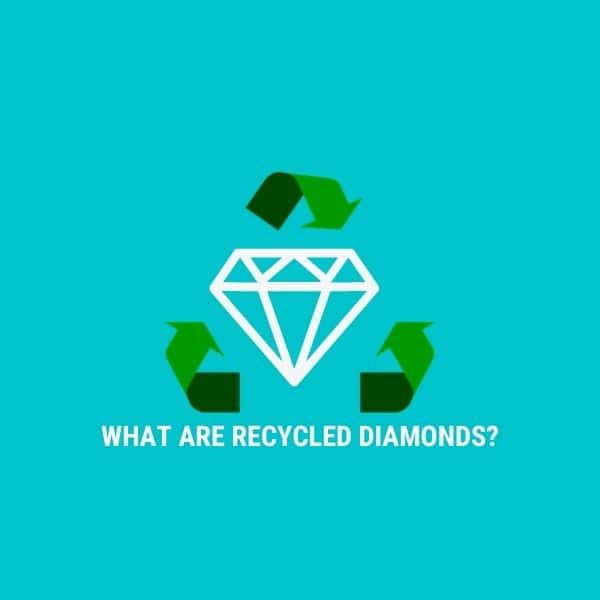When buying and selling diamonds, a GIA grading report can be an excellent tool to make an informed purchasing decision. Here we have outlined some of the most important parts of a GIA diamond grading report, and why they matter.
- Carat Weight
- Color Grading
- Diamond Clarity
- Cut Grading
- Natural or Lab Grown
- Additional Grading Information
- Fluorescence
- Inscription
- Comments
- Clouds are not shown
- Clarity Grade is based on clouds that are not shown.
- Additional Twinning Wisps are not shown.
- Internal laser drilling not shown.
- Finding Laser Drill Holes on the Clarity Characteristics Diagram
- Color Treatment
- Country of Origin Report
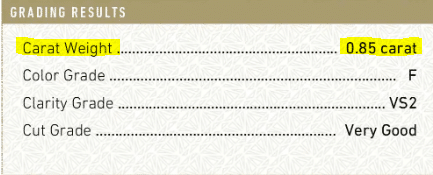
Carat Weight
The size of a diamond is determined by its weight in carats. While size is an obvious factor in determining the value of a diamond, bigger is not necessarily better, all “4 C’s” should be considered.

Color Grading
A colorless diamond acts as a prism to form a rainbow of colors, commonly called “fire”. This scale shows the color range from colorless to a degree of a yellow tint from D-Z. Visible differences between one grade of color and the next grade are very subtle.
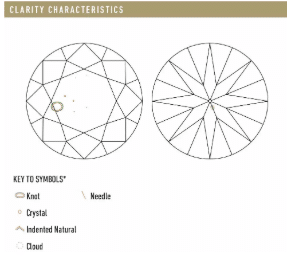
Clarity Grading
The GIA defines clarity as the absence of inclusions. GIA reports plot the clarity characteristics in a diagram of the diamond’s shape and faceting style within the report. Clarity grades range from Internally Flawless to I3.
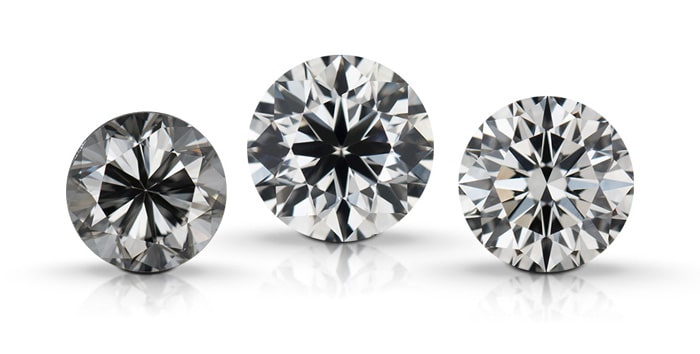
Cut Grading
GIA grades the cut quality of diamonds ranging from poor to excellent by assessing the overall face-up appearance to predict the intensity of the fire, scintillation, and brightness of the stone.
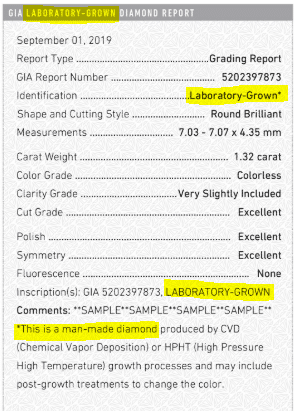
Natural or Lab Grown
As per the GIA, a lab grown diamond grading report offers the same information as the GIA natural diamond grading report, using a more general description of color and clarity. The report will include a lab grown disclosure underneath the GIA logo, next to “identification”, inscribed onto the diamond girdle and within the comments section as “man-made.”
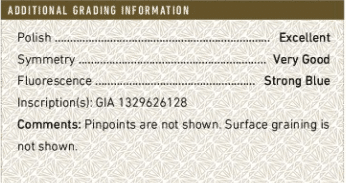
Additional Grading Information
This portion of the report will cover the polish, symmetry, fluorescence, inscription, and additional comments about the stone.
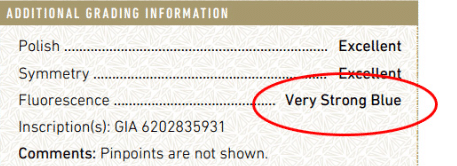
Fluorescence
The fluorescence of the stone can occasionally make it appear to be hazy or milky, but will not effect the clarity of the stone.
In diamonds with color J or darker, fluorescence can make it appear whiter.
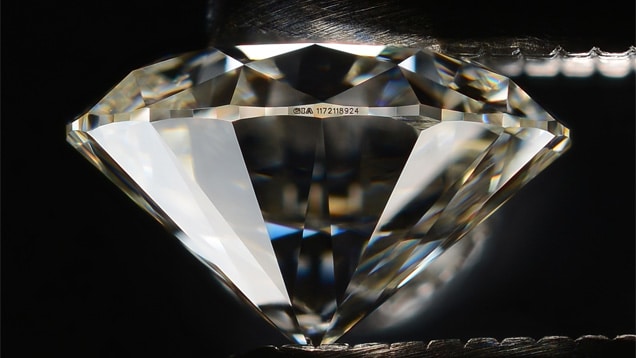
Inscription
Typically, diamond inscriptions are placed on the girdle. However, if its a trademarked cut, the inscription may be placed on the table or facet.
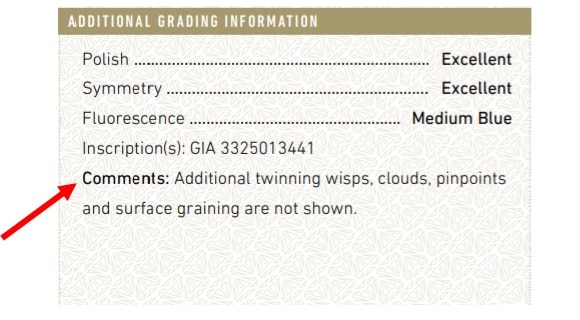
GIA Comments
In the comments section of the report, you will find notes made by GIA about the stone that could not be represented well elsewhere.
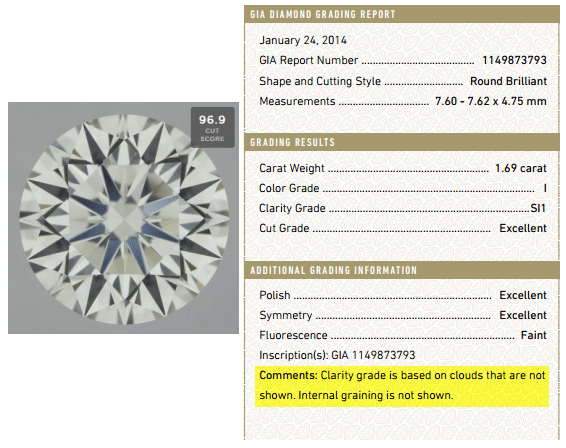
Clouds are not shown.
Clouds within a diamond may cause milkiness or haziness. We suggest examining the stone before purchase if this comment is on the GIA report.
Clarity grade is based on clouds that are not shown.
This comment when paired with a low-clarity grade translates to “there are so many clouds in this diamond it is not feasible to chart them on a 2D diagram.”
A stone with this comment will be extremely milky.
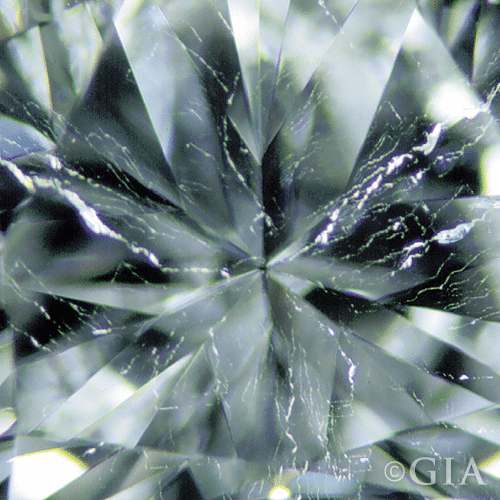
Additional Twinning Wisps are not shown.
Twinning wisps are a combination of inclusions (typically feathers, clouds, and crystals) that may show as cloudy wisps or even black/white stripes within the stone. Depending on the severity and color, these can affect the brilliance of the diamond.
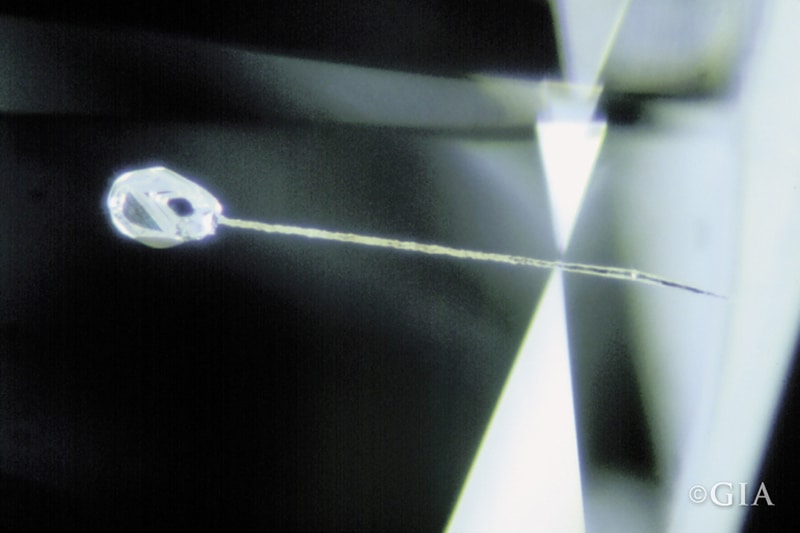
Internal laser drilling not shown.
Be on the lookout for this comment. This indicates that the stone has been clarity enhanced through the laser drilling of an inclusion.
This was a very common practice to remove inclusions, beginning in the 1960s. The FTC now requires disclosure of laser drilling to customers.

Finding Laser Drill Holes on the Clarity Characteristics Diagram
In this image, we have highlighted a laser drill hole as marked on a GIA diamond grading cert. As you can see, at first glance it can be easy to miss. Make sure to examine the diagram before purchasing the stone. GIA reports do not always disclose laser drill holes within the comment section, and this can be an expensive mistake.
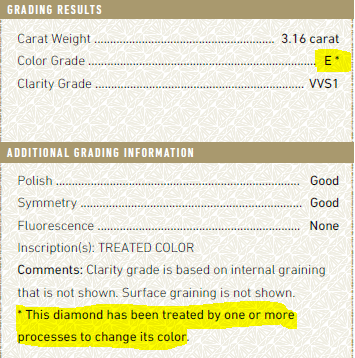
Color Treatment
Color treatments, such as high-pressure high-temperature (HPHT) enhancements can affect the value of the stone. You must also disclose this when selling the diamond, as per the FTC.
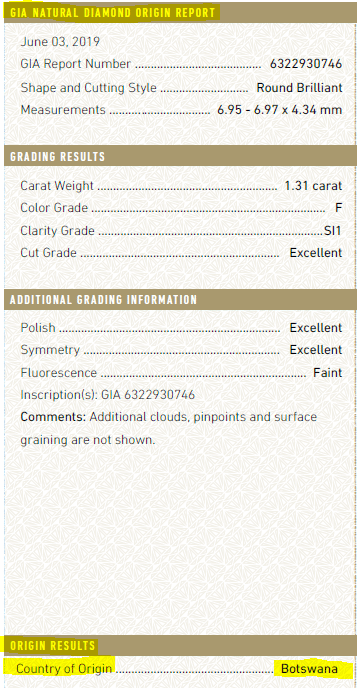
Country of Origin Report
This very new addition to GIA reports launched on May 24th of 2019. It is only relevant to diamond rough examined and assigned a rough ID number before being cut and polished.
This section adds traceability to your inventory and a story to your stone!
Photos and information sourced from the GIA website and the Bluestone Trading Diamond Knowledge Center.
For all your wholesale diamond and estate jewelry needs call or text us at 440-442-7280. You can also call toll free at 888 800-BLUE. Subscribe to our newsletter to be the first to know about our Trading Tip of the Week such as How to set up your Google Business Page, How to Create a Facebook Business Page, and How to Build an Email List, as well as Bluestone’s latest news.






